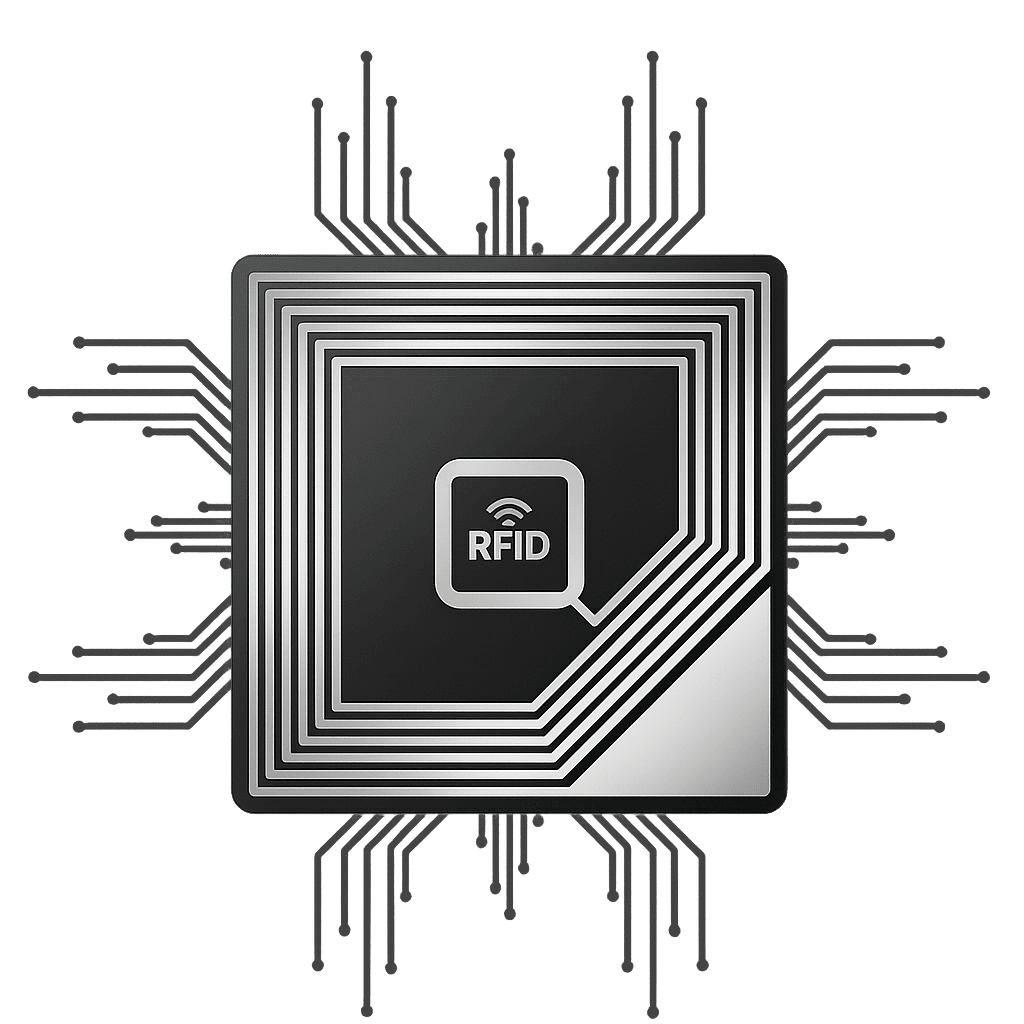What is RFID?
RFID (Radio Frequency Identification) is a technology for automatically identifying and tracking the identity of objects or people through radio waves. RFID systems rely on an RFID tag to exchange data and an RFID reader to read and evaluate the tag. Thanks to contactless and fast data transmission, RFID systems are now widely used in a wide variety of industries.
Basic Components of RFID Systems
RFID systems consist of three main components:
1. RFID Tag: This component is attached or integrated into the object to be identified. It contains a microchip and antenna. The microchip stores the relevant data and the antenna transmits the data via radio frequency.
2. RFID Reader: A device that detects the signals from the tag and makes sense of these signals. It can transfer the data to a centralized system through a network.
RFID Working Principle
RFID technology shares the information on a tag with a reader in a non-contact way using an electromagnetic field. The RFID reader sends a signal and the tag receives this signal and sends back the data stored in itself. This process takes place in milliseconds and requires no physical contact.
RFID systems are divided into three according to the energy source of the tag:
1. Passive RFID: There is no battery inside the tag, it is activated by the signal from the reader.
2. Active RFID: The tag has a self-powered battery and can send signals over greater distances.
3. Semi-Passive RFID: The tag uses a battery but sends signals only when triggered by the reader.
Advantages of RFID Systems
| The advantages offered by RFID systems are quite wide: 1. Contactless Reading: Unlike barcode systems, no direct contact or line of sight is required. 2. Multiple Reading: It can read many tags at the same time, which provides great convenience, especially in inventory tracking. 3. Speed and Efficiency: Data can be collected at high speed without the need for human intervention. 4. Wide Application Area: It can be applied in many areas from logistics to healthcare, from traffic to retail. |
 |
RFID Application Areas
RFID systems are used in various sectors to provide operational efficiency and security:
1. Logistics and Warehousing: Entry-exit tracking of products, inventory control and automatic stock management.
2. Retail: Anti-theft, smart shelf systems and automated payment systems.
3. Health Sector: Patient wristbands, medication tracking, medical device management.
4. Vehicle and Traffic Management: Highway toll systems, parking lot management, license plate recognition supported vehicle tracking.
5. Security: Entry-exit control, personnel tracking and access authorization.
6. Libraries: Book tracking, automatic borrowing and return systems.
RFID and Intelligent Transportation Systems (ITS)
RFID technology plays a major role in intelligent transportation systems. Thanks to RFID tags integrated into vehicles:
• Highway and bridge crossings can be made contactless.
• Situations such as speed violations, lane violations or unauthorized entry of vehicles can be detected automatically.
• Traffic flow can be managed more effectively and data can be collected with real-time analysis.
• Special vehicles such as emergency vehicles can get priority right of way.
The Future of RFID Technology
RFID systems are integrated with the Internet of Things (IoT), forming the basis for smarter and automated systems. In the future, RFID is expected to become widespread in all areas from production to consumption with lower cost, higher range and more secure versions. Especially when combined with artificial intelligence-supported analysis, RFID systems will not only collect data but also contribute to decision-making processes.